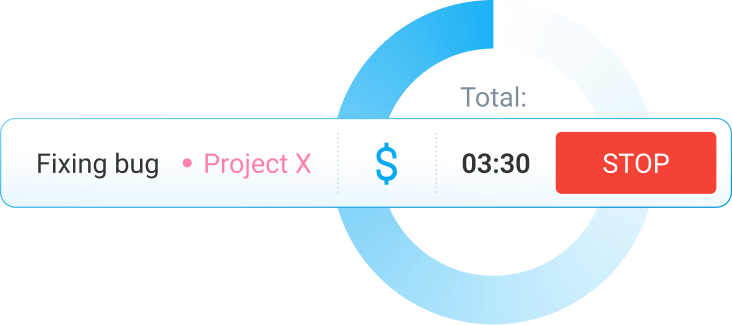4 Time tracking methods to boost productivity
People generally track time either by using a simple, basic method (like paper, rule-of-thumb estimates, and spreadsheets) or by using a dedicated time tracking software.
We can thank several circumstances for the popularization of time tracking:
- The mass use of smartphones,
- The appearance of the cloud, and
- The shift to remote and hybrid work.
As more and more people are now relying on timekeeping, they're also learning about its many advantages. Accurate time tracking comes with many benefits for businesses and their employees:
- It saves money and time.
- It improves productivity.
- It gives more insight into how and where you spend your time.
- It helps identify bottlenecks and top performers.
- It supports better decision-making and progress tracking.
- It helps avoid disruptive and constant check-ins.
- It promotes transparency between managers and employees.
So, the question that remains is — What’s the best time tracking method?
To help you choose, we will devote this guide to explaining 4 different time tracking methods. Stay tuned and take your pick at the end.
Types of time tracking methods
Time tracking represents the process of measuring and documenting your work hours.
People generally track time either by using a simple, basic method (like paper, rule-of-thumb estimates, and spreadsheets) or by relying on a dedicated time tracking software.
We will go into more detail about the following time tracking methods:
- The paper method,
- The honor system,
- The spreadsheet method, and
- The time tracking software method.
Let’s begin!
The paper method
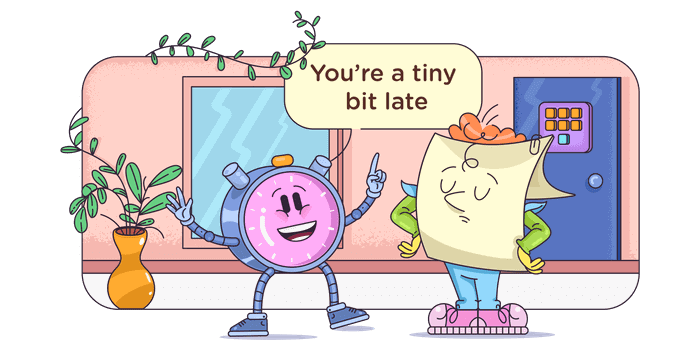
For this time tracking method, all you need is a pen, paper, and your phone (or a stopwatch).
You use the phone or stopwatch to measure the time it takes you to finish an activity and then simply write down your time results on the paper.
Pros of the paper method
Some of the advantages of the paper method include the following:
- It’s simple and easy to use — anywhere and anytime.
- It’s an inexpensive time tracking method.
- It doesn’t require the use of modern technology.
Cons of the paper method
The paper method also comes with a few disadvantages:
- Relying on human memory can lead to errors.
- Using the paper method means you have to distribute and collect the timesheets physically.
- Filling out paper timesheets can be time-consuming and ineffective.
- Losing or damaging the paper can leave you without a time report.
The honor system
The honor system of time tracking relies on an employee's rule-of-thumb estimate.
The system works like this:
You report the time you think you've spent on a project to your project manager.
Your project manager creates a rough estimate of the amount you should be paid based on the hours you've worked and your hourly rates.
Pros of the honor system
Two reasons speak to the advantage of the honor system:
- This time tracking method is the easiest.
- It’s also one of the most affordable ways to track time because it doesn’t require the use of additional materials or apps.
Cons of the honor system
However, the honor system can be problematic due to:
- Inaccuracy. You may underestimate or overestimate the time you've spent working, so your compensation may be less or more than what you truly earned.
- Lack of details. If you wish to provide a client or a project manager with a detailed report on the assignments you completed and the time that went into them, you can't because you don't have one.
The spreadsheet method
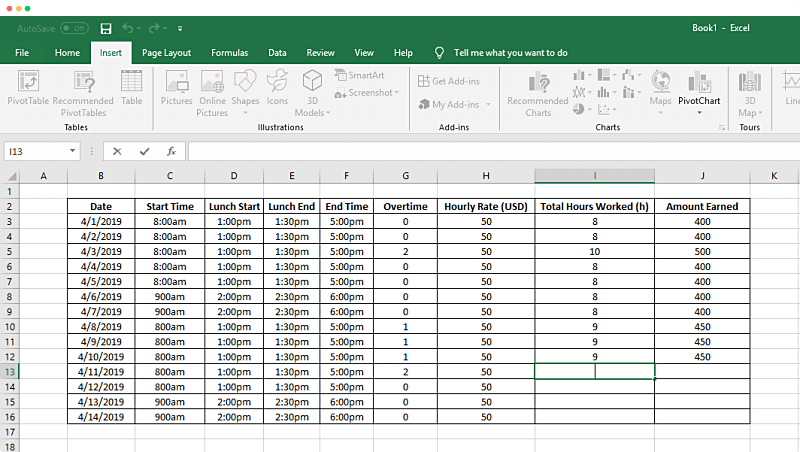
In the spreadsheet method, you use a spreadsheet template to manually add the time you started working on a project and the time you finished the project.
Excel spreadsheet templates are a popular choice.
The best practice to follow with the spreadsheet method is to divide your Excel spreadsheet into several columns and fill them in.
Some columns that you might consider adding are:
- Activity,
- Client,
- Start Time,
- End Time and
- Total Hours Worked.
Pros of the spreadsheet method
The spreadsheet method is a great way to:
- Easily send reports to clients or the project manager.
- Ensure more accuracy in time tracking.
- Have a straightforward way to save employee time entries and run basic calculations, such as hourly rates or other costs.
Cons of the spreadsheet method
Just like the other time tracking methods, the spreadsheet method comes with several disadvantages:
- It’s time-consuming. You have to manually type in the data for your every move during work hours.
- It lacks flexibility. An Excel spreadsheet can be problematic to maintain, especially if too many people attempt to access it and track their time at the same time.
The time tracking software method

Time tracking software is a time tracking method that helps its users easily track the time they spend on specific tasks. It involves using specialized software to track time.
Thanks to time tracking software, you can:
- Gain better insight into the time you spend on your daily tasks,
- Easily manage your time, and
- Maximize your productivity.
Pros of the time tracking software method
Time tracking software comes with many benefits:
- Speed. With time tracking software, documenting work hours or goal progress is a matter of seconds.
- Automation. If you choose a good time tracking software, you can track the time you spend on certain activities and tasks automatically.
- Reliability. Time tracking software is one of the most reliable and secure ways to track different types of tasks and projects.
- Accuracy. Making errors with time tracking software is reduced to a minimum.
- Reports. Generating reports doesn’t have to be a pain in the neck. Time tracking software helps you create detailed daily, weekly, and monthly expense reports across teams and projects.
- Feature richness. Time tracking software can also help you track employee attendance, plan work, collect labor analytics, gather data, generate invoices, and create reports.
- Universality. Regardless of the size of your company and the work arrangement you’ve adopted (remote, hybrid, or in-office), time tracking software can help you have a detailed breakdown of how your employees spend their time at work.
- Platform availability. Most time tracking software apps are available across different platforms: web, desktop, and mobile. Some also offer browser extensions.
Cons of the time tracking software method
Time tracking software has a few low points as well.
- For example, some time tracking software apps are too complicated to use and discourage the team from using them regularly.
- Another disadvantage can be the price — time tracking software can be quite an expensive tool, especially if you’re running a large business.
Who can use time tracking software?
One great thing about time tracking software is that it’s one of the most universal time tracking methods of all.
Time tracking software can be used by a wide range of professionals:
- Freelancers and independent consultants who work by the hour can use time tracking software to bill their clients more accurately.
- Hybrid, remote, and virtual teams can rely on time tracking software to make straightforward schedules and provide proof of their work.
- Organizations that receive government funding or non-profit organizations track time because they have a legal obligation to account for every working hour.
- Businesses with field workers or flexible working hours use time tracking software to ensure that their employees’ work is documented properly and that everyone is paid accordingly.
- For construction companies, time tracking software can provide GPS clocking and location tracking as a way to save time and money.
Companies that usually work with many clients, such as various agencies, and tech or IT companies can rely on weekly or monthly time tracking reports to identify problems and bottlenecks.
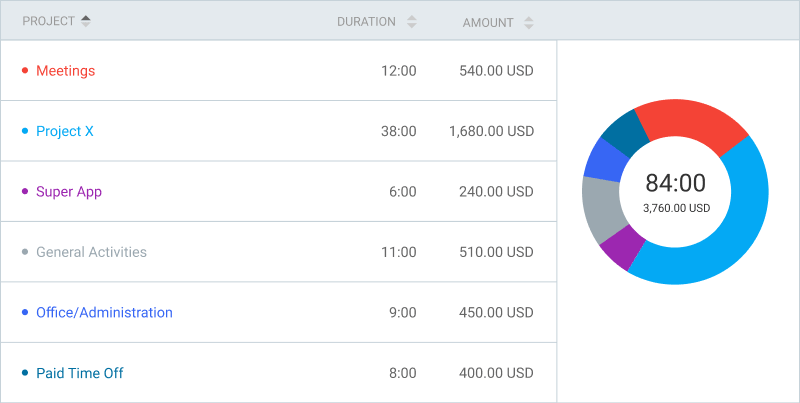
Let’s now see how you can use time tracking software to your advantage.
Difference between a freelancer, a contractor, and an employee How freelancers spend timeWhat types of time tracking software are there?
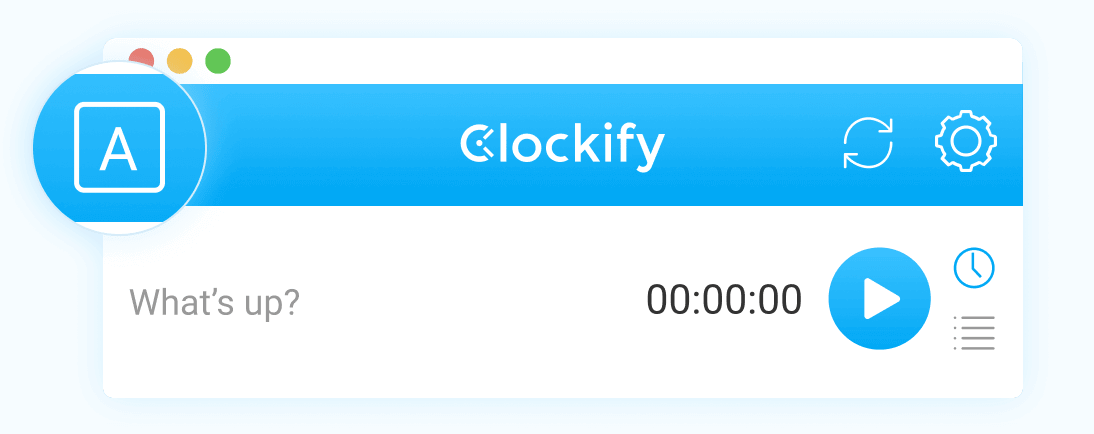
Depending on the nature of your work, you might want to consider different types of time tracking software.
For example, Clockify, a free time tracking app, provides you with the following:
- Timesheet software: This is a great option for tracking employee attendance and calculating work hours.
- Timekeeping software: With timekeeping software, you can create reports and manage all your projects and tasks.
- Time recording software: This type of software allows you to choose how to record your time — by using a timer, auto-tracking your time, entering your time manually, or recording time in a timesheet.
- Time clock software: Calculating billable hours and tracking payroll, time-off, and breaks is easy and quick with time clock software.
- Automatic time tracker: This type of software automatically monitors and tracks where you spend your time, in terms of websites and apps.
Track your time with Clockify
All the methods we’ve listed and explained here might be suitable options for someone.
However, time tracking software stands out from the crowd because it:
- Helps you save time,
- Supports better teamwork and workflow,
- Helps create a more accurate schedule, and
- Allows you to have a better understanding of profitability.
Personal preference might play a role in choosing the best time tracking method, but above that, you should also think in terms of productivity, cost-effectiveness, and proper time management.
This is why we propose you go with time tracking software if you’re determined to minimize distractions, focus better at work, and boost your productivity in the long run.
Once you try Clockify, a time tracking software already used by millions, you probably won’t go back.
Clockify is available free of charge and for an unlimited number of users — you won’t have to worry about costs once your company starts expanding.
Plus, the software is continuously improving and adding new features, including integrations and browser extensions.
This means that if your needs change or your demand increases, you can be sure that Clockify will follow suit.
Beating procrastination and setting your priorities straight don’t have to be a pain in your neck. With great time tracking software such as Clockify, you’ll learn not to waste your time and become more effective.
